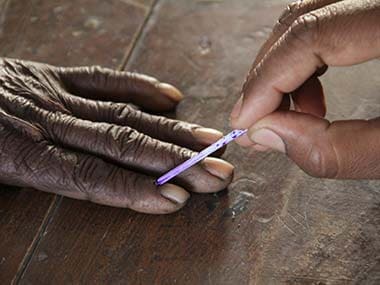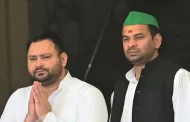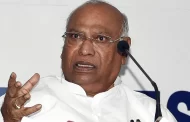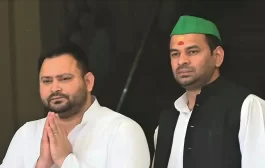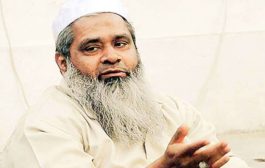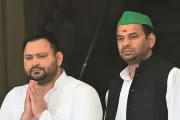By moving the Supreme Court seeking to restore, revert and hand over 67 acre ‘superfluous or excess’ land outside of disputed .333 acre land in Ayodhya to those who owned and occupied same chunk of land prior to its acquisition in 1993, the Narendra Modi government has addressed a long pending demand of Hindutva groups and its core social constituency.
Incidentally, Centre’s demand comes on a day when a five-judge Supreme Court bench was scheduled to hear the Ram temple case but cancelled it due to unavailability of one judge. The government petitioned the court a day after law minister Ravi Shankar Prasad questioned Supreme Court’s delay in Ram Temple hearing while showing urgency in taking up cases like Sabarimala, adultery, gay rights, urban Maoists and vote of confidence by Yeddyurappa in Karnataka.
The apex court is yet to give dates for hearing in both the cases, the title suit on disputed site and the latest petition by the Union government.
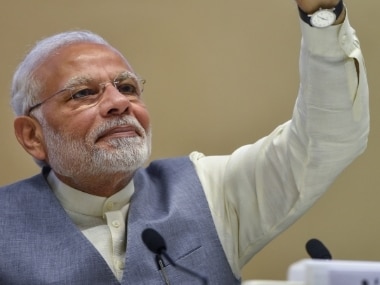
After being in office for almost five years, the Modi government has finally made a move on its own to send a message that it is serious about fulfilling its commitment, which it claims was an article of faith for them. The prayer which comes in last quarter of Modi government, thus, can have loaded political and social implications.
Legality of the issue will be debated in days and months to come in the court but with Lok Sabha elections due in a few months, the politics of it all will be far more gripping as it will play out in public domain till the final phases of polling.
Let us first understand what this plea is all about:
After demolition of Babri masjid on 6 December, 1992 (which the BJP has referred to as the “disputed structure”), the then Kalyan Singh government in Uttar Pradesh was dismissed and President Rule was imposed by Centre led by Narshimha Rao. Decision on the land is decision for the State to take. However, since the State was under President Rule, the Narshimha Rao government through ‘Certain Areas of Ayodhya Act 1993’ acquired 67.703 acre land including .333 acre disputed land.
The Centre became its custodian. The areas outside of what is called the disputed Ram Janmabhoomi-Babri Masjid site was placed under tight security cover. The Supreme Court subsequently ruled that no activity can take place in the acquired area (even outside of disputed area). A receiver was appointed. Massive boundary wall was erected around the whole 67.703 acre land and sentry posts at various points were erected. As of today, this area is guarded by Central para-military and UP-PAC forces.
Modi government is now seeking to undo two things — previous Supreme Court order dated 31 March, 2003 and reclaim the land acquired by Narshimha Rao government in January, 2003. Current prayer before the court says pending final verdict of the Supreme Court on title suit, ownership of disputed .333 acre land (or 2,77 acre which broadly taken as disputed land) and rest of the land be returned to the original owners.
It is interesting to note why Modi government has put its weight behind this plea a few months ahead of the Lok Sabha elections.
Most of this 67-acre-land belongs to Hindu groups. Ram Janmabhoomi Nyas, currently headed by Sant Ram Vilas Vedanti, a former BJP MP, for instance owned approximately 42 acres of 67 acre land prior to acquisition by the Rao government. This has been a long standing demand of VHP and Hindu groups that since there was no dispute over this vast chunk of land, these should be freed for development and construction peripheral structure of Ram temple.
If the court gives its nod to the plea, then the land will be returned to Hindu groups, like the Ram Janambhoomi Nyas, and construction of Ram temple other than Garbh Griha would begin immediately.
This also comes two days ahead of VHP sponsored two-day Dharm Sansad at Kumbh in Prayagraj where seers are expected to take a strident position on the issue. Allahabad High Court has ruled that a temple existed at the site as proved by Archeological Survey of India findings. Even today a de-facto Ramlalla temple (a temporary tarpaulin structure) exists where a priest offers daily puja.
The puja at the site is going on since the time Ramlalla statue was placed at the disputed site in December, 1949. There is an argument by Hindu groups, most recently by RSS chief Mohan Bhagwat, who said that the Hindus were feeling insulted due to delay in resolution of issue by the apex court and the patience of majority community was running out.
Modi government has now sought to address concerns of its ideological fountainhead and its core constituency. Given the remaining time Modi is in office and the longevity of the 16th Lok Sabha, an ordinance couldn’t be brought. The government also couldn’t bring a regular bill for same reasons, also because it couldn’t bring a law as the case is sub-judice.
This was thus perhaps best way forward for Modi government to convey a message that it was serious about construction of Ram temple. Yogi government has taken a series of steps for development of Ayodhya and also approved construction of an over 200-metre tall statue of Lord Ram. The Centre has approved building of a Ram museum in Ayodhya.
Modi government’s move in court will have interesting fallout in terms of public perception, depending on way how the Supreme Court responds. If court rejects the application then it will possibly create an angst among the Hindu community and has the potential of becoming an electoral issue with somewhat polarising effect, particularly in politically crucial state like Uttar Pradesh.
Secondly, if the Supreme Court accepts the application and agrees to hear it then it would be termed as an achievement for the Modi government. Again it may have its own impact in run up to the upcoming Lok Sabha elections.
source: Firstpost.com

